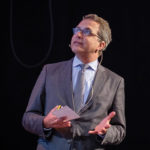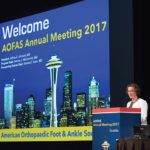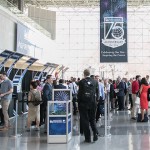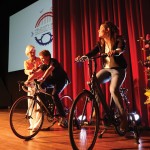
This was the 142nd incarnation of the meeting, drawing more than 4,000 engineers and scientists from 61 countries to “learn the latest and state-of-the-art in the various subdisciplines of the material sciences field,” according to Louise Wallach, CMP, TMS’s senior manager of events, programming, and sales. “It is unlike any meeting I’ve seen,” added Lynne Robinson, contributing editor with JOM, TMS’s member journal, who covers the Annual Meeting extensively. “It’s really extremely diverse and covers the full spectrum of material sciences and engineering,” from aluminum and magnesium, to nanotechnology biomaterials, and energy.
CHALLENGES
Over the past several years, TMS had seen such growth in its Annual Meeting that space to house the program’s technical sessions was becoming a concern – particularly in the venues for which organizers had signed contracts several years before. (Read our Pre Con profile here.) Luckily, Wallach said, with “the package that we had in San Antonio, we were able to add rooms at the convention center, and the Grand Hyatt is connected, so it’s almost like it’s a part of the convention center.”
Although TMS 2013 did experience a slight decline in attendance from the 2012 meeting, Wallach doesn’t fully attribute that to recent federal budget cuts, which have affected the ability of government employees, including scientists and researchers, to travel for meetings. “We’ve had several years of growth and knew that there might be a little dip,” Wallach said, but attendance was still higher than what she had projected for 2013.
What is affected by federal sequestration measures is that “we don’t have the scientists working with each other and sharing information that we need to,” Wallach said. Robinson agreed, and found cutbacks to be a hot topic among TMS 2013 attendees. “There was a lot of conversation about it,” she said, and “the larger issue is that it’s detrimental to the free flow of knowledge and information in the scientific community…. It is going to have a long-term impact on how we’re able to progress in science and technology.”
INITIATIVES
With thousands of attendees across many disciplines, organizers noted that there was a crucial need for specific networking opportunities. New plans this year included turning TMS’s annual association-business program from a formal business presentation into a casual reception with a rotating slide presentation that provided annual-report information. “We had some hors d’oeuvres and drinks,” Wallach said, “and people really did mingle, enjoy, and the format was much more successful this way.” TMS also hosted an invitation-only reception for members who had attended 10 or more consecutive annual meetings.
The organization added to its technical offerings this year, including more than 350 symposiums fostering collaboration between scientists across their myriad fields of work. The Wadsworth Symposium, where Jeffrey Wadsworth, president and CEO of the Battelle Memorial Institute, discussed “Global R&D Trends – Implications for Material Sciences,” drew more than 400 attendees. And volunteer organizers of a special aluminum keynote session, Robinson said, took great care in having speakers who represented every step of the aluminum-production process. “It’s an example of the development of more and more synergies among various disciplines with each meeting.”
Convene’s Pre-Con/Post-Con series asks meeting planners about their challenges and how they intend to address them (Pre-Con), and then checks back in after the meeting has occurred (Post-Con) to see how well they worked out.



